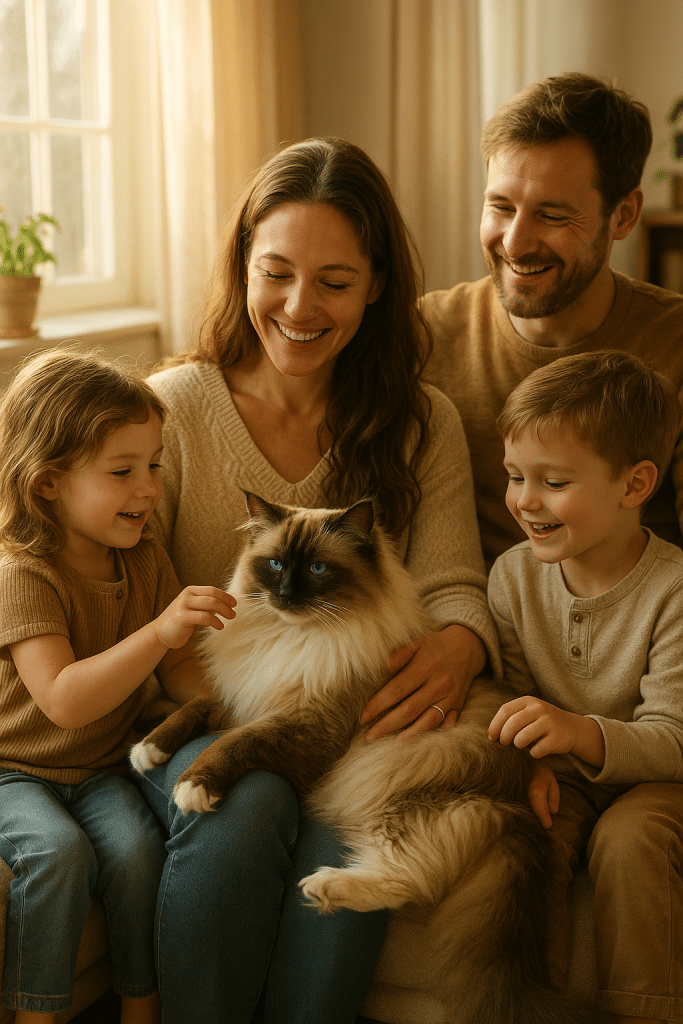Introduction to Long Haired Cat Breeds
Choosing the right feline companion is a delightful but sometimes daunting adventure, especially when considering long haired cat breeds. These elegant cats, with their flowing coats and gentle personalities, offer not just beauty but also warmth and companionship for families and pet owners alike. If you’re searching for a feline friend who’s as loving as they are striking, you’ll want to learn about these magnificent long haired breeds that blend charm with personality.
In this article, I’ll guide you through the best long haired cat breeds for families, sharing insights into their unique characteristics, grooming tips, and how to train them effectively. Whether you’re drawn to the mesmerizing blue eyes of a Ragdoll or the rugged, majestic aura of a Norwegian Forest Cat, you’ll find detailed information to help you make an informed decision tailored to your family’s lifestyle. We’ll also cover hypoallergenic options, common health concerns, and practical grooming advice, ensuring your new furry friend feels right at home from day one.
What Defines a Long Haired Cat Breed?
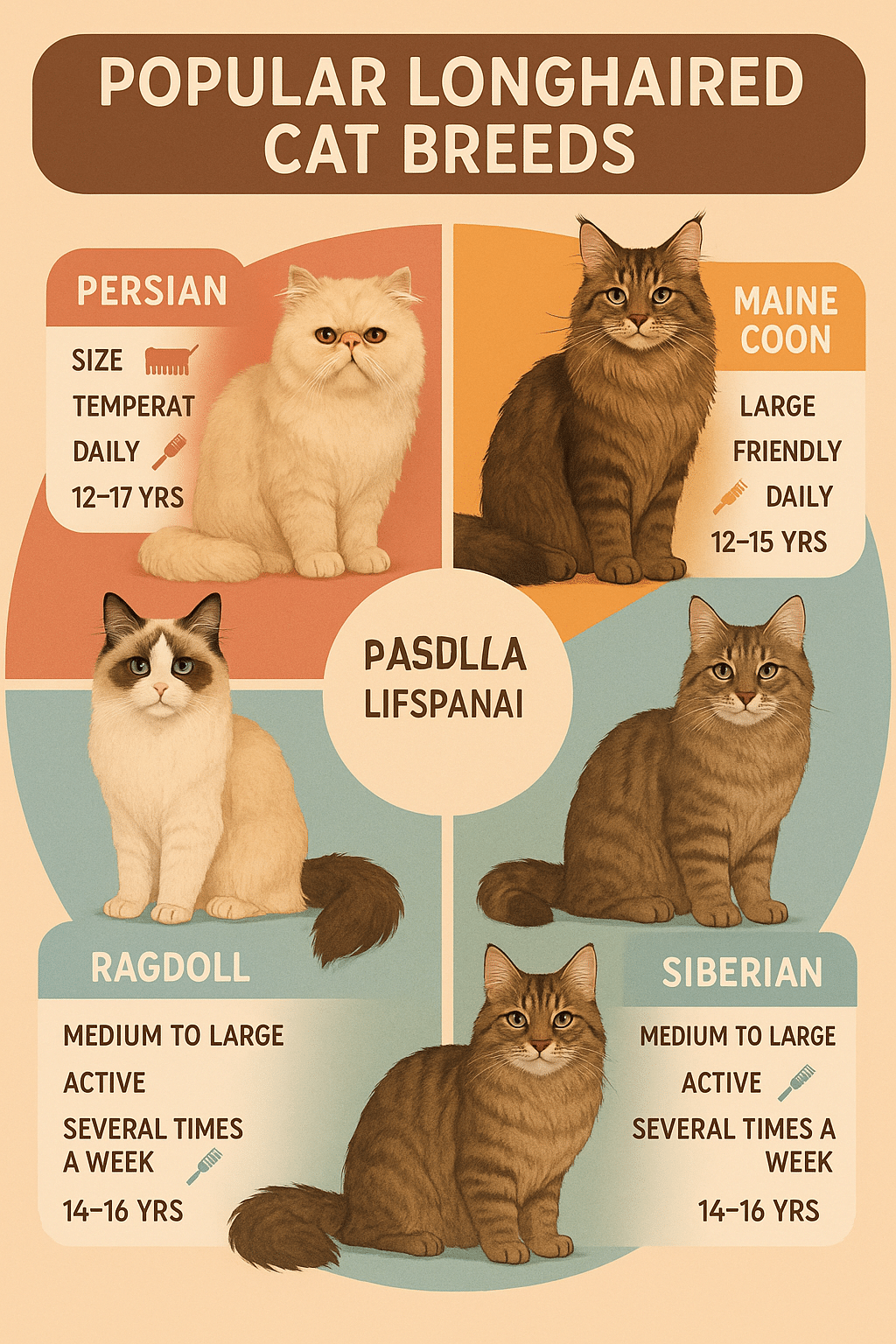
Long haired cat breeds are distinguished primarily by their coat length, texture, and density. These cats typically sport fur that ranges from silky and fine to thick and plush, often requiring specialized care to keep their coats healthy and tangle-free. Unlike short-haired cats, their fur can grow several inches longer, especially around their necks (forming a mane), tails, and hindquarters, giving them a regal, fluffy appearance.
Coat length alone isn’t the sole defining trait, though. Many long haired breeds also have unique facial features, body structures, and temperaments shaped by their origins. For example, the Maine Coon is known not only for its bushy tail and tufted ears but also for its large size and friendly disposition. Understanding these nuances will help you appreciate and care for your cat’s distinctive needs.
Why Families Prefer Long Haired Cat Breeds
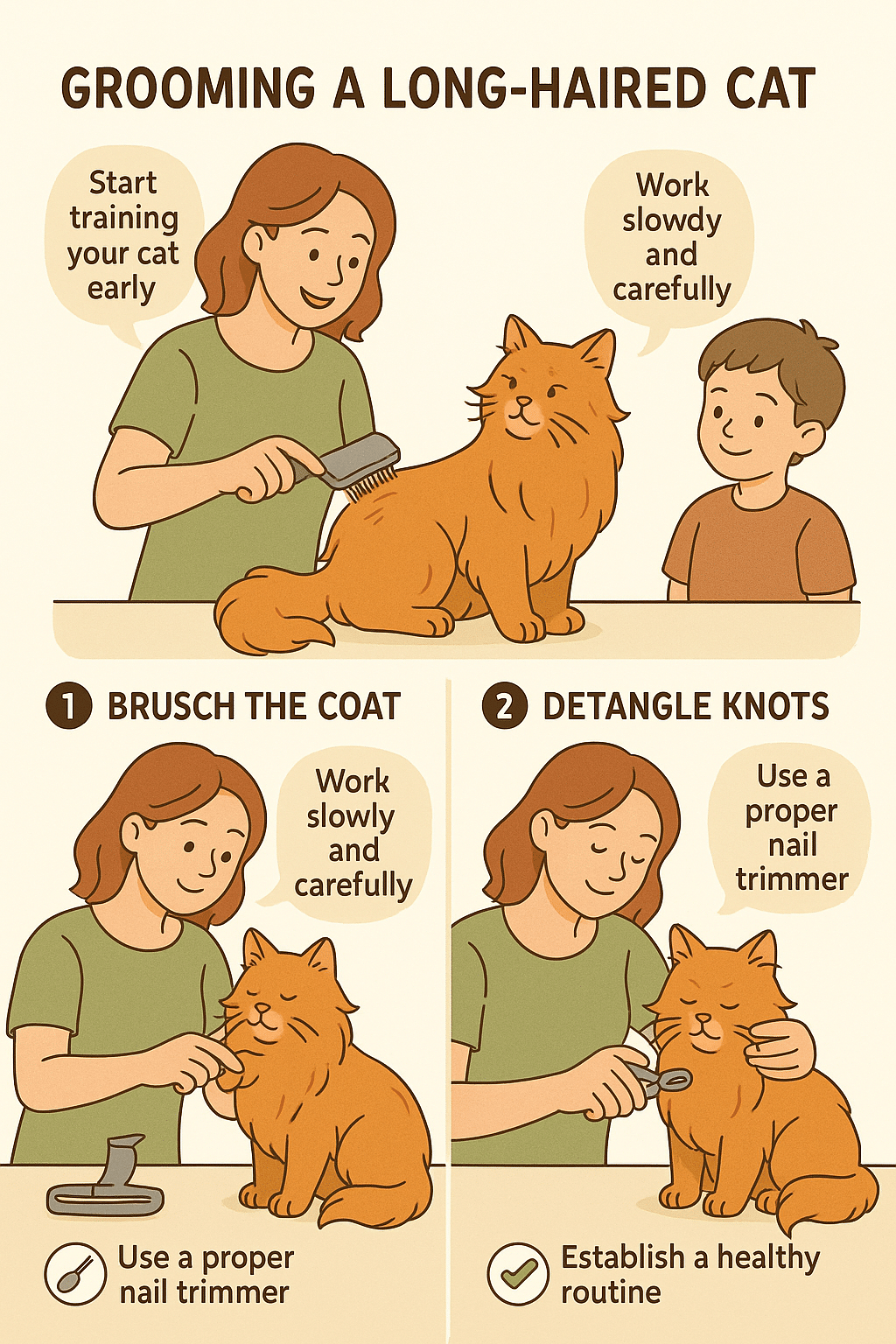
Long haired cats have a magnetic appeal that often tugs at the hearts of families. Their luxurious coats are undeniably beautiful, making them a centerpiece in any home. But beyond the aesthetics, these breeds tend to have calm, affectionate temperaments that mesh well with children and other pets.
Many long haired cats enjoy cuddling and thrive in environments where they receive plenty of attention and social interaction. For families seeking a bond that mixes beauty and companionship, these breeds often prove to be ideal choices. Additionally, the grooming routine can become a special time for interaction, fostering closeness between pet and owner.
That said, long haired cats do require more upkeep than their short-haired counterparts. You’ll want to factor grooming, potential shedding, and health monitoring into your decision. But with the right knowledge and preparation, these breeds can be a rewarding addition to your family.
The Top 5 Long Haired Cat Breeds for Families
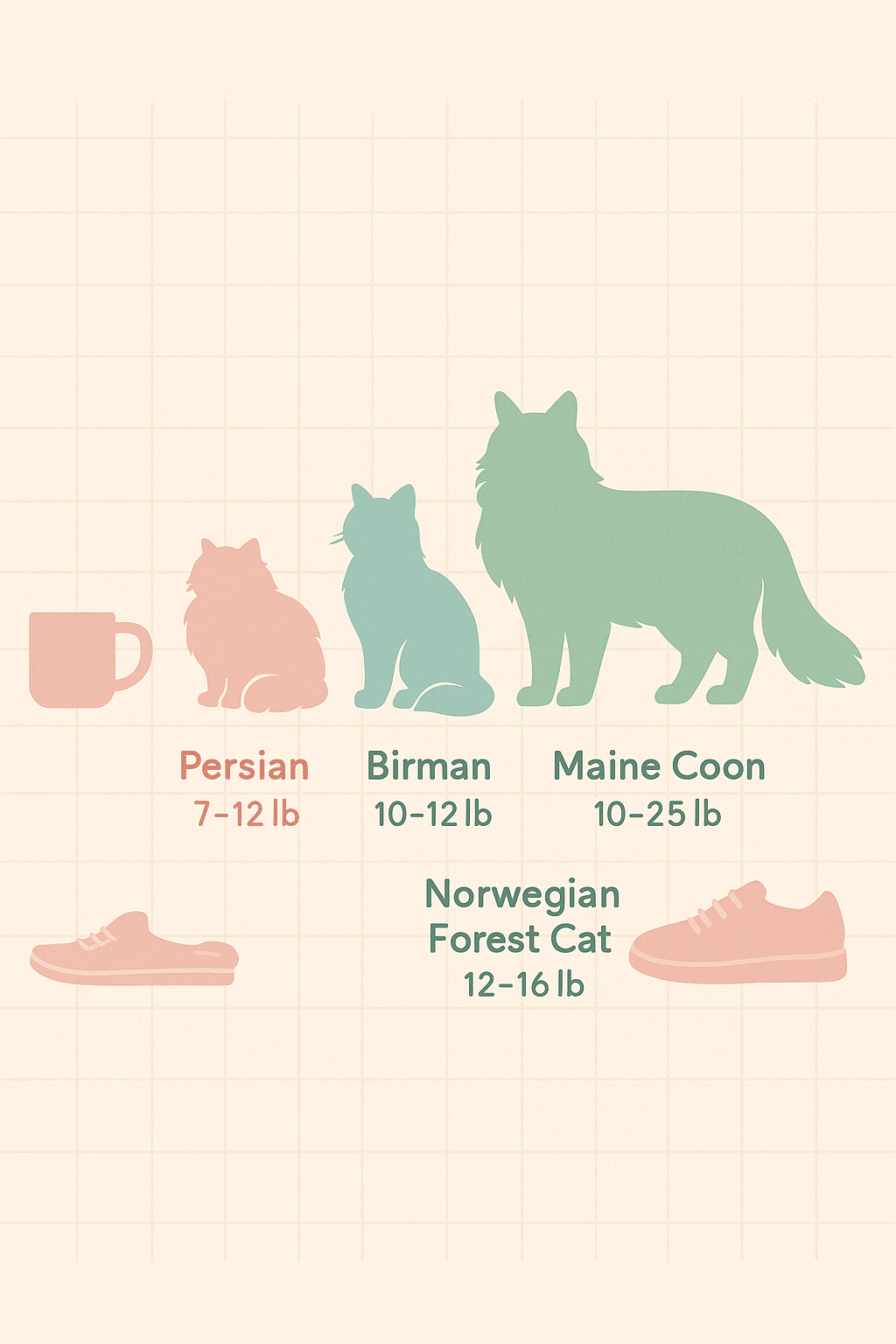
Let’s explore five stunning long haired cat breeds that are perfect for families — each with unique features and temperaments that suit different lifestyles.
1. Ragdoll: The Gentle Giant with Blue Eyes
Physical Characteristics and Coat Care
The Ragdoll is a large, striking breed most famed for its captivating blue eyes and silky, semi-long coat. Their fur is plush but surprisingly soft, often described as feeling like rabbit fur. Their color patterns range from pointed, mitted, to bicolor, with creamy bodies contrasted by darker points on their ears, face, legs, and tail.
Since Ragdolls possess a medium-length coat that is less prone to matting, weekly grooming is sufficient to keep their fur in top shape. Using a soft bristle brush or a stainless steel comb helps maintain their coat without causing discomfort.
Temperament and Family Compatibility
One of the reasons Ragdolls top the lists of friendly long haired cat breeds for children is their laid-back and docile nature. They often go limp when held — hence the name “Ragdoll” — and rarely display aggression, making them wonderful companions for active kids or gentle-paced families. They crave human interaction and do well in busy households.
Grooming Tips for Ragdolls
Although grooming is relatively low key, it’s important to start brushing your Ragdoll early to get them accustomed to the routine. Regular grooming sessions can double as bonding moments and help spot skin issues or tangles early. If mats form, use a detangling spray or seek professional grooming to avoid hurting your cat.
2. Maine Coon: Friendly and Adaptable
Origins and Unique Traits
Maine Coons are one of the largest domestic cat breeds, famous for their tufted ears, bushy tails, and luxurious coats that protect them from harsh climates back in their namesake state. Their fur is glossy and water-resistant with a dense undercoat, perfectly suited to outdoor adventures.
Ideal Living Environments and Socialization
What makes Maine Coons excellent family pets is their gentle, outgoing nature. They’re playful, intelligent, and thrive in homes with children and other pets. Being quite adaptable, Maine Coons do well in apartments if given daily engagement, though they appreciate access to outdoor spaces.
Managing Shedding and Coat Maintenance
Maine Coons are moderate to heavy shedders. Their dense double coat requires thorough brushing at least two to three times a week, especially during seasonal changes. Using an undercoat rake and de-shedding tools can help control hair around the home, making Maine Coons manageable even for families concerned about shedding.
3. Birman: The Sacred Cat with a Silky Coat
Cultural Significance and History
The Birman, also known as the “Sacred Cat of Burma,” is steeped in legend and mystery. Revered for their beautiful gloves, socks, and dark points, Birmans have a medium-long coat that’s silky and less prone to mats compared to other long haired breeds.
Personality and Suitability for Homes with Children
Birmans are strikingly gentle and social. They bond deeply with their families and enjoy following their favorite humans from room to room. This breed is highly recommended for families with children due to their patient and affectionate nature.
Hypoallergenic Considerations
Though no long haired cat is fully hypoallergenic, Birmans often cause fewer allergy reactions because of their lower levels of dander. If you or your family members are sensitive but still want a stunning long haired breed, Birmans are an excellent starting point.
4. Norwegian Forest Cat: The Mythical Beauty
Coat and Grooming Needs
The Norwegian Forest Cat is a natural breed developed for cold climates — their thick double coat features a woolly undercoat and glossy overcoat designed to repel water and snow. Their fur can grow up to 3-5 inches long, particularly around the neck and tail, giving them a majestic mane.
Regular grooming sessions, at least twice a week, are a must to avoid tangles and remove loose hair. Unlike some breeds, Norwegian Forest Cats handle grooming sessions calmly, making them easy to care for.
Exercise, Enrichment, and Behavioral Traits
These cats are active and love climbing; a sturdy cat tree and interactive playtime will keep them stimulated. Their curious and playful personalities make training enjoyable — they’re known to pick up tricks and respond well to clicker training.
Training Techniques for Long Haired Cats
Because of their intelligence, it pays to consistently train Norwegian Forest Cats using positive reinforcement. Introducing socialization early, using gentle voice cues, and providing puzzle toys can reduce behavioral issues and keep them mentally sharp.
5. Persian: The Classic Longhair with a Regal Presence
Health Considerations Specific to Persians
Persians are the embodiment of long-haired elegance, with their unmistakable flat faces and luxurious coats. Their brachycephalic skull structure requires families to be aware of respiratory issues and eye problems more common in this breed.
Grooming Challenges and Solutions
With a dense, lavish coat that can mat easily, Persians require daily grooming. A combination of pin brushes, wide-toothed combs, and occasional bathing is necessary. For many owners, professional grooming every few months helps manage coat health.
Indoor Care and Environmental Needs
Due to their sensitivity to heat and proclivity for respiratory issues, Persians thrive best as indoor cats in temperate conditions. Enriching their environment with soft bedding, low-stress settings, and gentle playtime assists in maintaining their well-being.
Comparing Long Haired Cat Breeds: Key Differences and Choosing the Right Fit
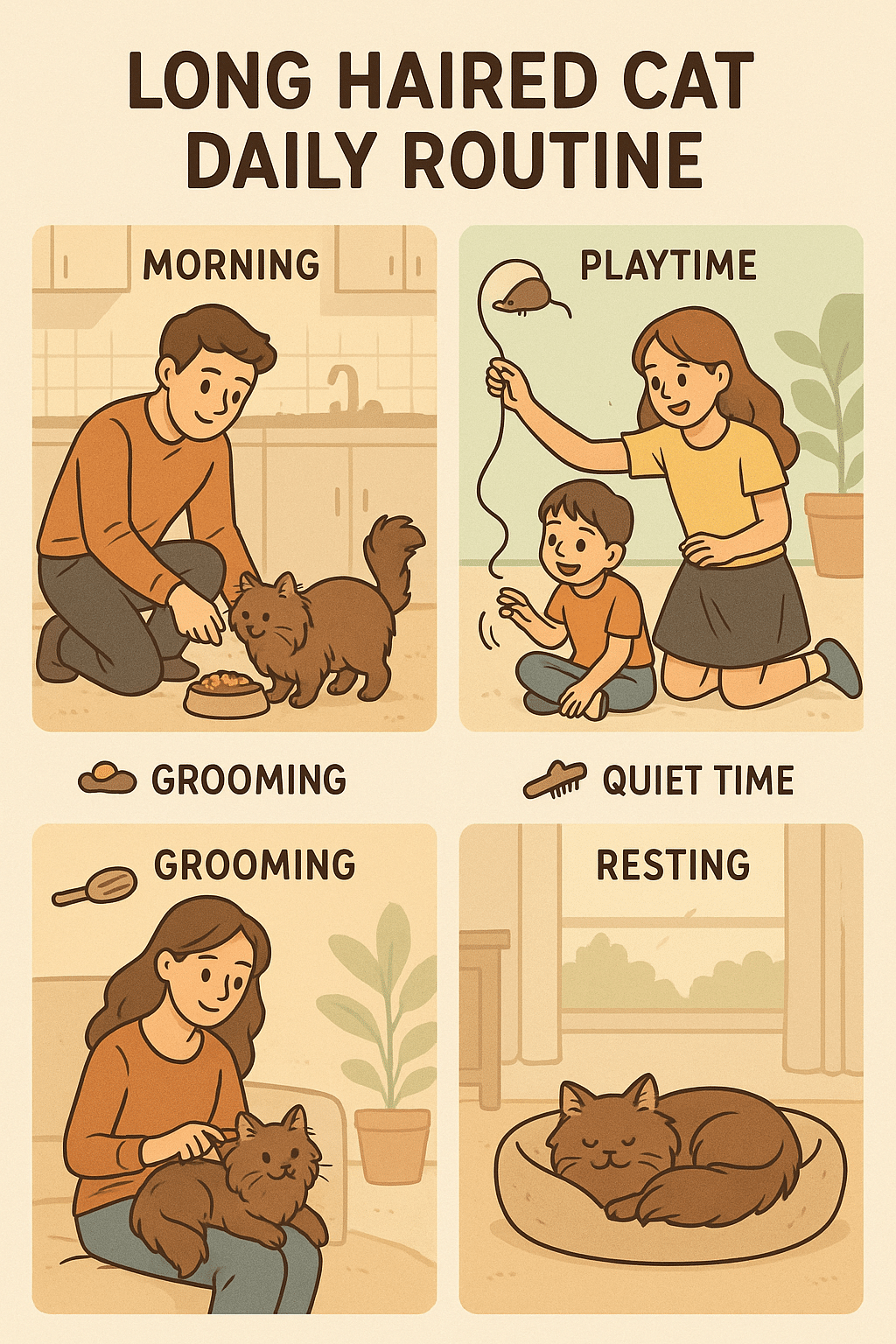
Coat Types and Grooming Requirements
The coats of long haired breeds vary widely—from the silky, low-maintenance fur of the Birman to the dense water-resistant undercoat of the Maine Coon. Some require daily grooming (Persians), while others need just a few times a week. Understanding these differences helps families balance beauty and care time.
Temperaments and Activity Levels
Activity levels range from the laid-back Ragdoll to the energetic Norwegian Forest Cat. Families with young children or other pets might prioritize gentleness and sociability, while active homes could look for more playful breeds.
Shedding and Hypoallergenic Qualities
While all long haired cats shed, breeds like the Birman and certain Ragdolls tend to shed less dander, which might be preferable for mild allergy sufferers. However, no breed is truly hypoallergenic. Regular grooming and cleaning help reduce allergen buildup.
Suitability for Different Family Dynamics and Living Spaces
Apartment dwellers might prefer more adaptable breeds like the Ragdoll or Birman, while families with larger homes and yards can accommodate more active breeds like the Maine Coon or Norwegian Forest Cat. Persians often flourish in quiet, calm environments.
Essential Grooming Tools and Daily Maintenance
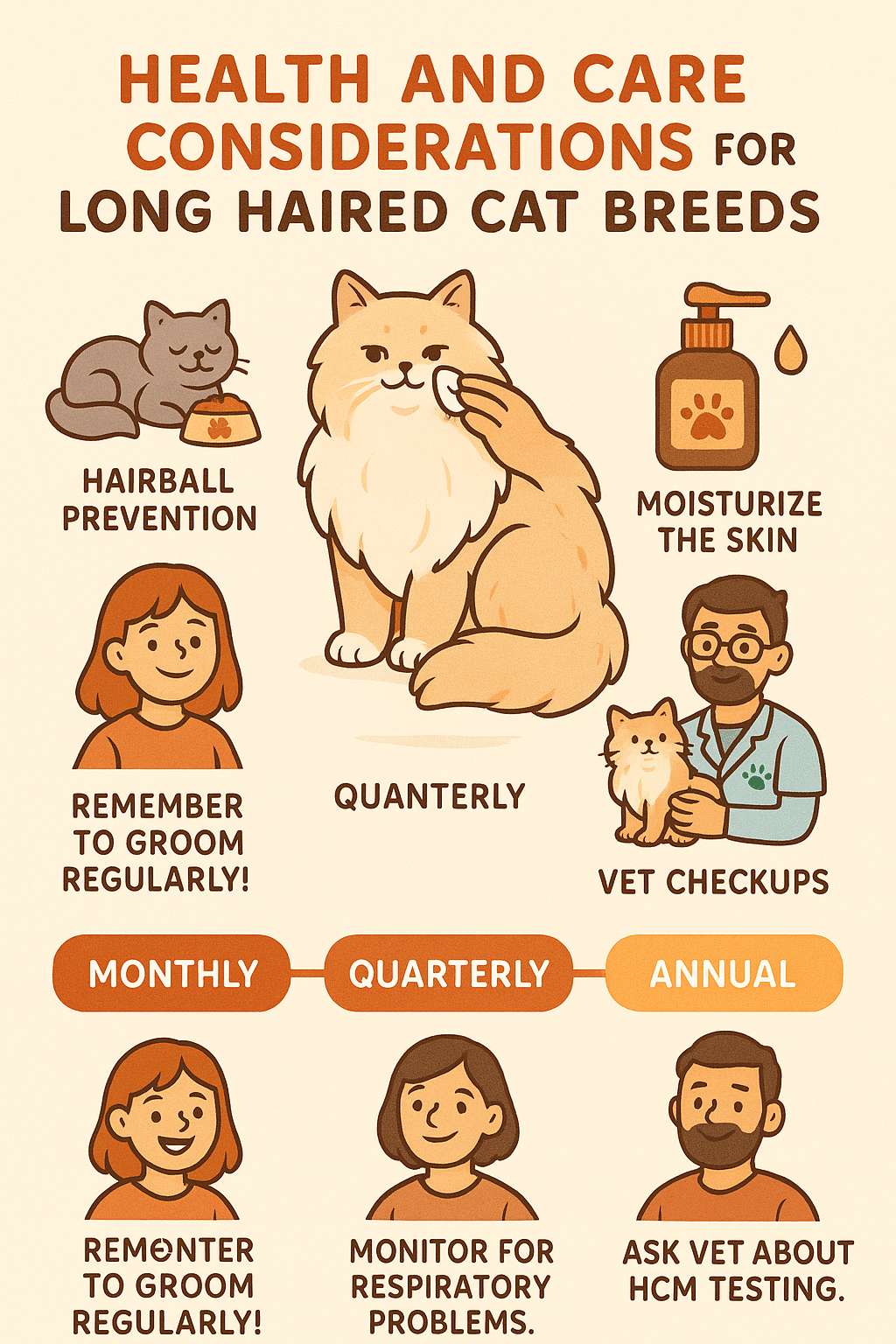
Brushes, Combs, and Detangling Accessories
For long coated cats, a well-rounded grooming kit includes a slicker brush, wide-toothed comb, undercoat rake, and detangling spray. Products like the Hertzko Self-Cleaning Slicker Brush are popular for removing loose hair without harming fur texture.
Bathing and Professional Grooming Tips
Bathing is optional for many, but occasional baths help manage oily fur and reduce shedding. Use cat-specific shampoos with moisturizing ingredients, and always rinse thoroughly to avoid skin irritation. Professional groomers can provide trims and mats removal if needed.
Preventing Matting and Skin Issues
A consistent brushing schedule prevents mats, which can cause discomfort and skin infections. Check ears, eyes, and paws during grooming to spot any signs of illness early. If you notice persistent mats or scratching, consult your veterinarian promptly.
Nutrition and Health Considerations for Long Haired Cats
Dietary Needs to Support Healthy Coats
Long haired cats benefit from balanced diets rich in omega-3 and omega-6 fatty acids, which promote glossy fur and healthy skin. High-quality proteins and adequate hydration are equally vital to help maintain their luxurious coats.
Common Health Issues in Long Haired Breeds
Issues like hairballs, urinary tract infections, and breed-specific conditions (such as hypertrophic cardiomyopathy in Maine Coons) require regular veterinary care. Addressing diet, hydration, and grooming reduces complications.
Regular Veterinary Care and Preventive Measures
Annual exams, vaccinations, dental care, and parasite prevention keep your cat happy and healthy. For breeds prone to respiratory or genetic disorders, more frequent vet visits may be necessary.
Hypoallergenic Long Haired Cat Breeds: Myth or Reality?
Explanation of Allergens and Coat Types
Cat allergens primarily come from a protein, Fel d 1, found in saliva and skin secretions—not just fur. Long haired cats might trap allergens in their dense fur, but shedding and grooming release these particles into the environment.
Breeds and Individual Cats Better Suited for Allergy Sufferers
While no cat is truly hypoallergenic, breeds like the Siberian and Birman tend to produce fewer allergens on average. Individual cats’ allergen levels may vary, so spending time with a prospective pet is crucial for allergy considerations.
Practical Tips for Allergy Management with Long Haired Cats
Regular grooming, air purifiers, HEPA filters, and designated pet-free zones can dramatically reduce allergic reactions. Frequent washing of bedding and vacuuming also helps minimize allergen accumulation.
Training Long Haired Cats: Creating a Harmonious Home Environment
Socialization Strategies for Families and Children
Early, positive socialization is key. Long haired breeds often appreciate gentle handling and praise. Encourage supervised interactions with children and other pets, teaching respect and care.
Addressing Behavioral Challenges Common to Long Haired Breeds
Long haired cats may become stressed by extensive grooming or changes in routine. Use calming pheromone diffusers, set consistent schedules, and provide quiet retreat spaces to reduce anxiety and related behaviors.
Enrichment and Exercise to Prevent Boredom
Interactive toys, climbing structures, and daily play sessions satisfy natural instincts and maintain mental health. Training sessions using treats and clicker techniques promote focus and reduce unwanted behaviors.
Rare and Unique Long Haired Cat Breeds Worth Considering
Overview of Less Common but Family-Friendly Breeds
Breeds like the Turkish Angora, Siberian, and Cymric (long haired Manx) offer unique looks and temperaments. They combine the beauty of a long coat with playful and affectionate natures, perfect for families seeking something a bit different.
Adoption Resources and Rescue Organization Tips
Many rescue groups specialize in rare breeds or have purebred cats awaiting homes. Organizations like The International Cat Association (TICA) and local breed-specific rescues are excellent places to start. Adoption not only saves lives but can connect you with knowledgeable foster families to ease your transition.
Conclusion: Making the Right Choice for Your Family
Selecting from the long haired cat breeds offers an exciting opportunity to invite a new member into your family who will provide love, entertainment, and companionship. Balancing breed traits, grooming needs, and temperament with your lifestyle is key to ensuring a harmonious, joyful experience for everyone.
Preparing your home with the right tools, environment, and knowledge empowers you to handle daily grooming and training confidently. Remember, every long haired cat is unique—invest time to build a strong bond, and you’ll enjoy years of rewarding companionship.
So, whether you’re drawn to the serene Ragdoll, the hardy Maine Coon, or the classic Persian, know that your perfect long haired feline friend is out there waiting to become part of your family. Dive into their world with patience, love, and care—and watch your home fill with fluff, purrs, and endless joy.
Frequently Asked Questions About Long Haired Cat Breeds
Q1: What are the best long haired cat breeds for families with children?
A1: Breeds like the Ragdoll, Birman, and Maine Coon are excellent for families. They are gentle, affectionate, and tolerant of children, making them ideal companions in active homes.
Q2: Are there hypoallergenic long haired cat breeds?
A2: While no long haired breed is completely hypoallergenic, Birmans and Siberians often produce fewer allergens. Allergy sufferers should spend time with a cat before adopting to gauge reactions.
Q3: How do I groom a long haired cat to prevent mats and tangles?
A3: Regular brushing with slicker brushes and wide-toothed combs at least 2-3 times per week is essential. Start grooming early and use detangling sprays if needed. Professional grooming helps for densely coated breeds like Persians.
Q4: What are common health concerns for long haired cat breeds?
A4: Issues include hairballs, breed-specific heart and respiratory problems, and skin infections from mats. Proper nutrition, routine vet visits, and attentive grooming help prevent many problems.
Q5: How can I train my long haired cat to adapt well to a family environment?
A5: Early socialization, positive reinforcement, and providing plenty of enrichment and exercise are crucial. Use gentle handling and be consistent with rules to foster a well-adjusted pet.
Quick Takeaways / Key Points
- Long haired cat breeds offer beauty, affectionate temperaments, and family-friendly personalities but require more grooming than short haired breeds.
- The top five family-friendly long haired cats include the Ragdoll, Maine Coon, Birman, Norwegian Forest Cat, and Persian.
- Grooming is essential for coat health: use specialized brushes and schedule regular sessions to prevent mats and shedding issues.
- Diet rich in fatty acids supports healthy fur; hydration and veterinary care prevent common long haired health problems.
- Hypoallergenic long haired breeds are a myth, but some breeds produce fewer allergens; managing environments helps allergy sufferers.
- Training and socialization from a young age foster positive behaviors and smooth integration into family life.
- Consider rare breeds for unique companionship and check rescue groups for available long haired cats needing homes.
By understanding the nuances of these magnificent long haired cat breeds, you’re well-equipped to welcome a wonderful feline companion into your family. Ready to start your journey? Reach out to breed clubs, local shelters, or reputable breeders today and discover the purr-fect long haired friend who will bring joy and warmth to your home for years to come.

